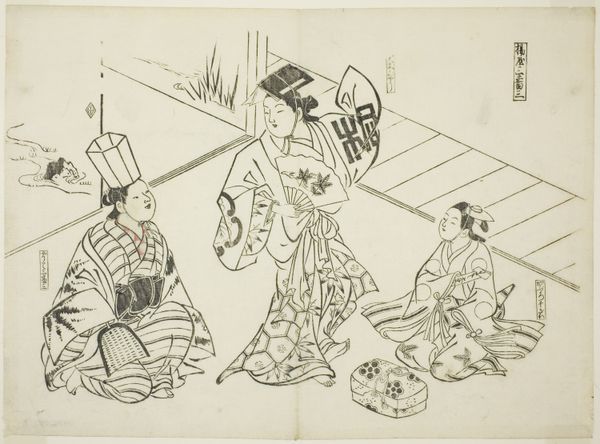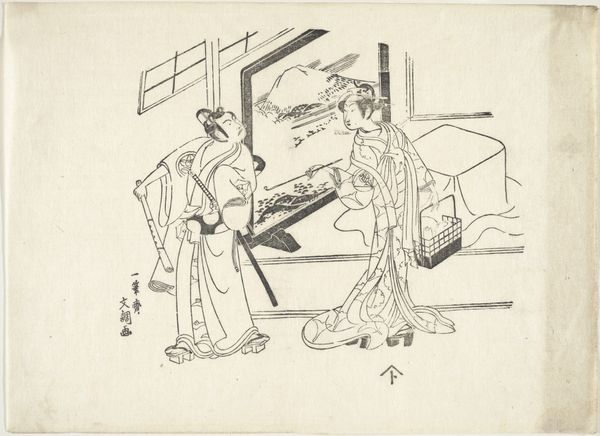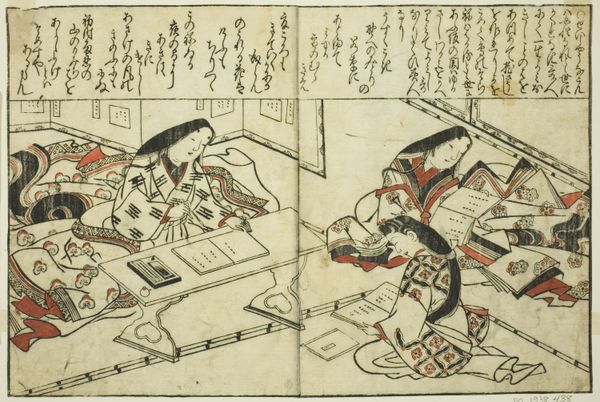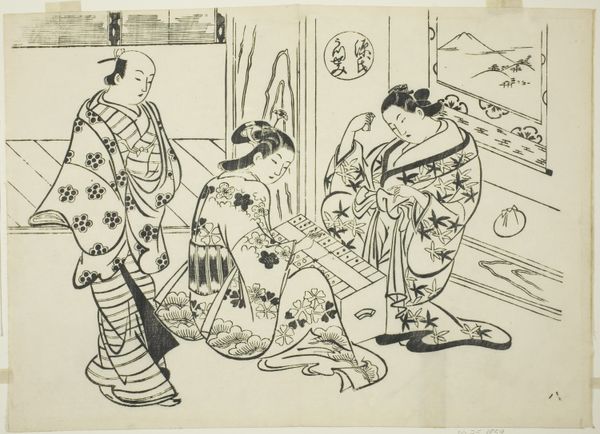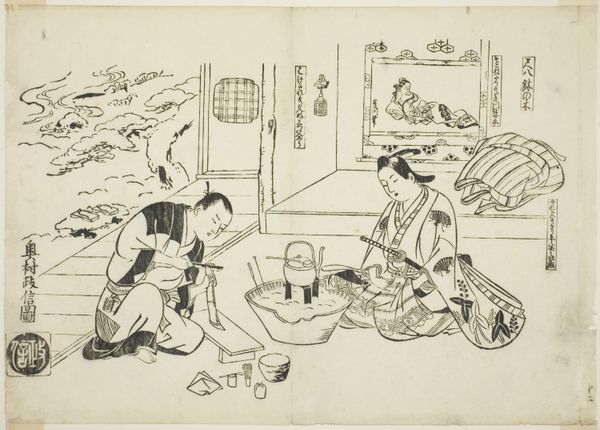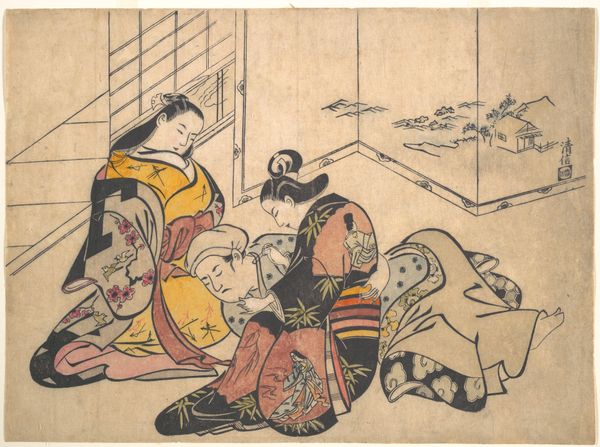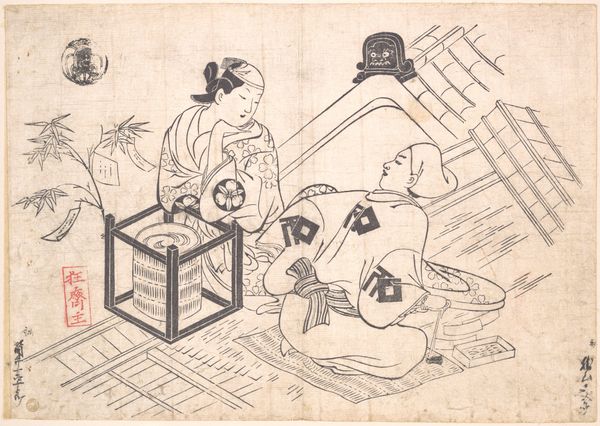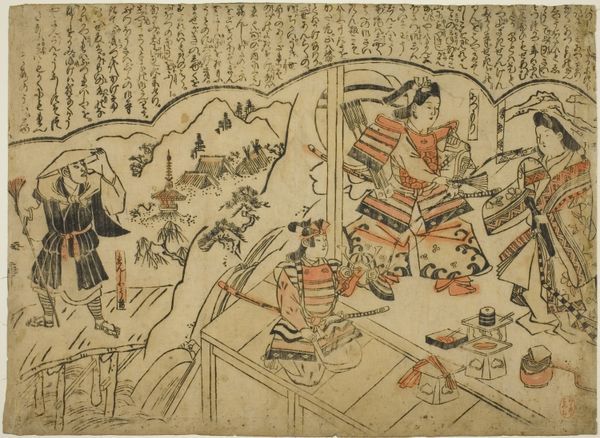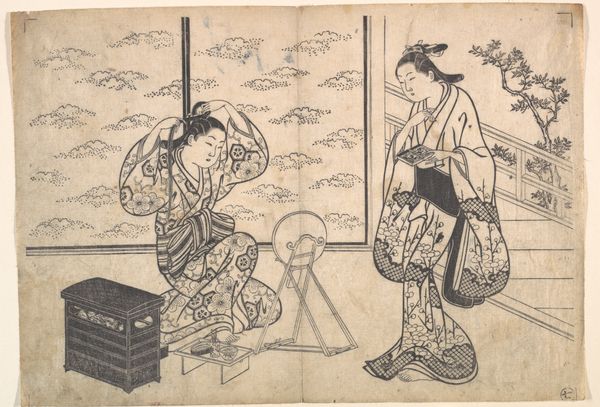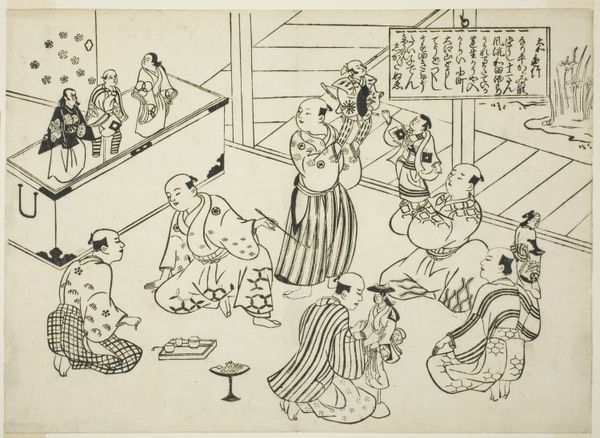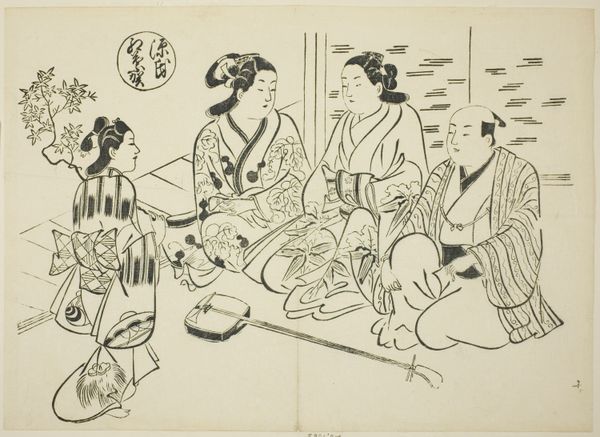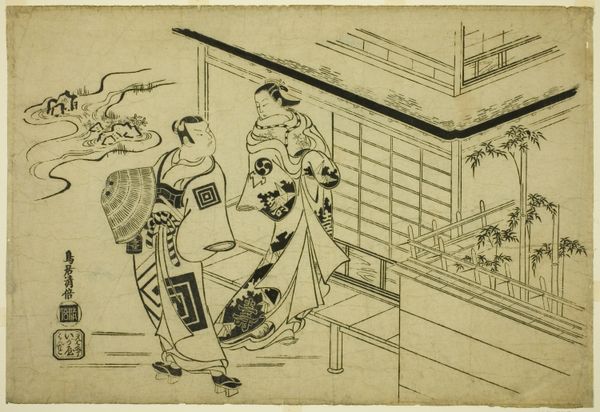
The Suetsumuhana Chapter from "The Tale of Genji" (Genji Suetsumuhana), from a series of Genji parodies c. 1710
0:00
0:00
print, paper, woodblock-print
#
narrative-art
# print
#
asian-art
#
ukiyo-e
#
figuration
#
paper
#
woodblock-print
#
line
Dimensions: 27.3 × 38.1 cm
Copyright: Public Domain
Okumura Masanobu's "The Suetsumuhana Chapter from 'The Tale of Genji'," rendered in ink on paper, presents a scene rich with cultural echoes. The garments worn by the figures are adorned with stylized floral motifs. These patterns were not merely decorative; they signaled social status and refined taste, drawing upon a long tradition of symbolic association between nature and courtly life. Consider the recurring motif of flowers in classical antiquity, where blooms represented fleeting beauty and the cycle of life and death. We see this echoed in Botticelli's "Primavera," a celebration of spring's rebirth and vitality. Similarly, in this print, the blossoms may be understood as embodying the ephemeral nature of human experiences, a sentiment deeply rooted in both classical and Eastern philosophies. The act of displaying textiles, with their intricate patterns, becomes a form of nonverbal communication, engaging viewers on a subconscious level. The gesture of presenting gifts and exchanging tokens, deeply ingrained in social rituals across cultures, hints at the complex web of relationships and emotions that shape our lives. It’s a continuous dance of meaning, where each repetition adds a new layer of significance.
Comments
No comments
Be the first to comment and join the conversation on the ultimate creative platform.
